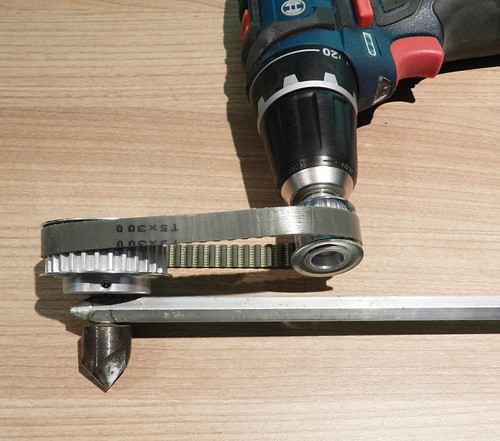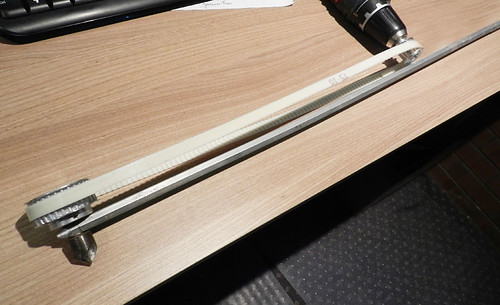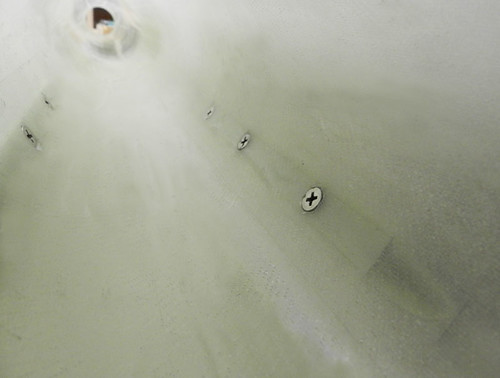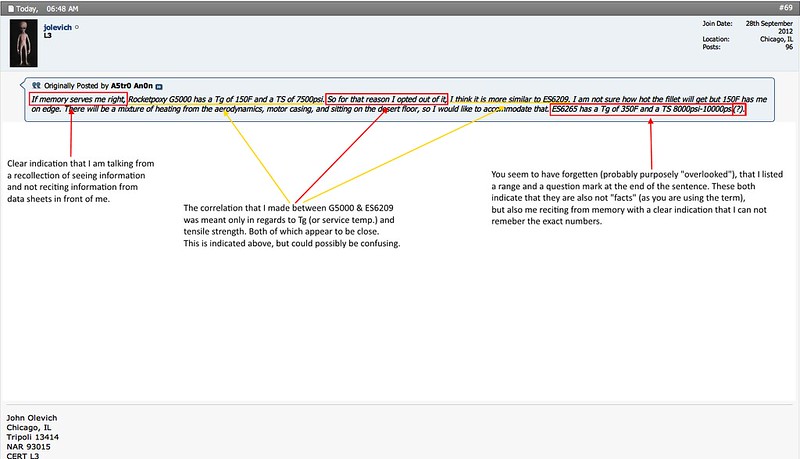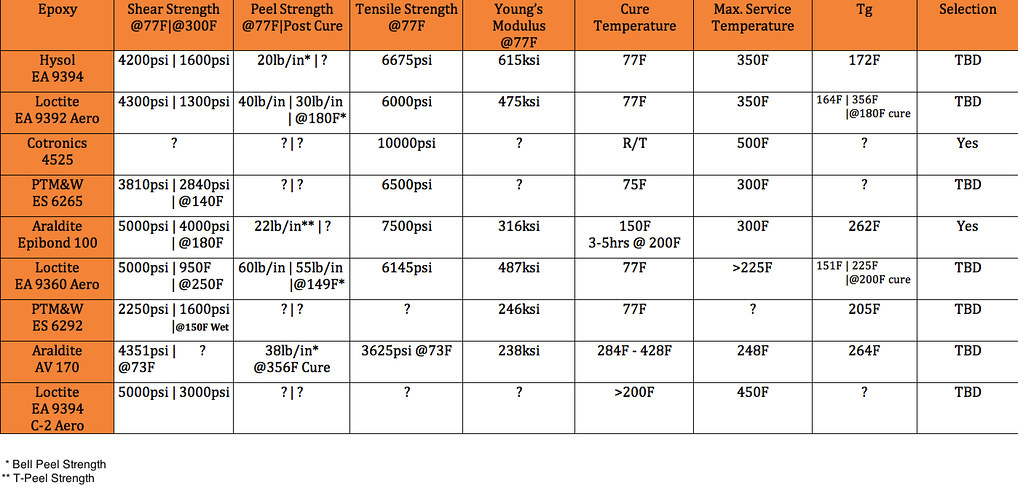I wish you would get your facts accurate before you publish them here on the forum, it really does everyone a disservice and will eventually make this forum a place where manufacturers will not want to deal with it and the “crazy chatter” will water this down for everyone to use as a serious place to get good accurate information. To set the record straight Rocketpoxy G5000 has a Tg of over 176F (was tested by several independent labs) I do not know where you got the 150F you obviously did not get that from the manufacturer or any published data sheet so did you just make this number up out of thin air? Also regarding Aeropoxy ES6265 ( which I am not saying anything negative about it as it is a decent high strength structural epoxy) but it has a Tg of 192F this is straight from the manufacturer which if you had bothered to check with them you would have known this as they are very upfront about this and you would know it is not the 350F you are publishing here on the forum as “truth”. Also the tensile strength of Rocketpoxy is 7,600 psi and the TS of ES6265 is 6,500 psi which is right off the Aeropoxy data sheet on their website and again you would have known this if you had done some quick checking on the data sheets and that it is not the 10,000 psi you claim ( and published ) the ES6265 has. Rocketpoxy would be more similar to ES6265 then ES6209, except the ES6265 would be much more brittle. Yes one of the major trade offs of a higher temp epoxy is that they generally become more brittle. We feel that Rocketpoxy G5000 is the perfect tradeoffs of high strength, not brittle, and a decent temperature rating that is good for about 98% of all high powered flights. I’ll give you a quick test you can do put about ¼ - 3/8 inch layer of epoxy into a plastic cup and let it harden, then whack all your samples with a hammer, you will notice quickly which epoxy did not shatter like glass ( hint the RP G5000 will not shatter) You can have a very high temp epoxy but if it is very brittle this may cause failure well before any temperature comes into play, I’m saying just think about it there are many dimensions to all of this and it is hard to take this serious if you were not willing to do the most basic work to get the specifications correct that you are publishing here as “knowledge”. Sorry if I came across a little harsh but really I get of tired of trying to defend against these types of unfair postings with bad and non factual information that can cause harm to a good product. If you searched out Mach madness here on the forum you will know that Rocketpoxy G5000 was used to construct basically G10 and carbon fiber fins epoxied to a very hot aluminum metal motor tube going close to Mach 3 with absolutely no structural loss from either heat or stress , the Rocketpoxy G5000 constructed rockets won this two years in a row now. Also we have two of the largest rocket distributors Apogee rockets and Wildman rocketry carrying Rocketpoxy G5000 and believe me these distributors only carry product they know are very beneficial to their customer base and have been tested extensively, and Rocketpoxy has become very popular among many of the high powered fiberglass and carbon fiber rocket builders so I’m not sure why you wouldn’t want to include RPG5000 into the tests.
Some Quick facts ES6209 is basically an unfilled standard epoxy I am not knocking it but just want you to get the facts straight since you are publishing them here for many to read ( that ES6209 is not at all similar to Rocketpoxy G5000) that’s why ES6209 has a viscosity of 50,000 centipoise you would need to add lots of fillers and thickening agents to make it anything even close to Rocketpoxy G5000 or a product like the ES6265 which is why Rocketpoxy and ES6265 has a viscosity of 350,000+ centipoise (basically a paste). If you love to formulate epoxies and have the time and knowledge to add and mix the correct amounts and types of fillers needed to make a superior high strength epoxy then the ES6209 is for you, if you want a high strength epoxy to use right out of the jar where an expert chemist with lots of test data has already done all the hard work for you then use something like the Rocketpoxy G5000 or ES6265. That is why filled epoxies do have better physical properties than unfilled epoxies and most that wish to use an epoxy ready to build with will prefer them, also that is why filled epoxies may cost a little more than an unfilled epoxy. Hope this cleared up a few facts regarding what was said about the Rocketpoxy G5000 and what is the real data.
Oh yay, I have made another friend. I could care less about how you feel and that you are tired, it is no excuse to be a d**k. You are so emotional about Rocketpoxy G5000, I take it you work at Glenmarc Industries. Great business philosophy, "attack everyone who says something incorrectly," brilliant.
EDIT: Oh how interesting… you own the company eh? Seeing as Glenmarc Industries domain is registered under your name and you are listed as the president, that explains why you are so sensitive. You need to relax… it is a more professional appearance.
I wish you would get your facts accurate before you publish them here on the forum, it really does everyone a disservice and will eventually make this forum a place where manufacturers will not want to deal with it and the “crazy chatter” will water this down for everyone to use as a serious place to get good accurate information.
"If memory serves me right
" <-- This clearly indicates that I am not reading this from any data sheets but rather pulling it out of my memory bank and is not meant as "fact," and "knowledge," as you mentioned.
I am sorry that you can not understand that. In case you still do not understand, that was not meant as a "fact." Sorry if I came off a little harsh, but I am tired of you keyboard warriors picking and choosing what you attack (sarcasm).
Forums are defined as "a place, meeting, or medium where ideas and views on a particular issue can be exchanged." Note the term views and not facts. I do agree with you in some regards but do not think one should come to a forum for serious data, especially when manufactures have data sheets for those purposes (as you mentioned). Since we should only post facts and not thoughts (even when they are clearly describe as recollection), maybe we should start telling others what temperatures and materials were used during the testing? On that note, do you happen to have any documents that you could share from the several independent labs on Rocketepoxy G500? For example shear, peel, etc results? Especially how different strength properties degrade at certain temperatures? That would be helpful to reconsider Rocketpoxy G5000 for other than initial testing. I am aware some manufactures do and do not test various things due to what they think is standard and not. Just curious. Oh and BTW I do own some Rocketpoxy G5000 and have used it.
You are right, I did use Tg incorrectly when talking about ES6265 & Rocketpoxy G5000. I was meaning it has a max service temp. of 300F and 175F (at the time I thought 150F). I was responding quickly and without much thought. The conversation in which I responded, did not require more than that and that is my opinion. In the relation I made to Rocketpoxy G5000 and ES6209 that was in regards to them both (being neat epoxy resins) having close tensile strengths and operating temps. Now on the GlenMarc Industries G5000 data sheet there is no mention of its Tg but only mention of its typical service and maximum operating temperatures. I was meaning its operating temperature,so my bad, but no worries. For Rocketypoxy G5000's data sheet it does not mention the definition of typical operating temperature; what is that definition? To clarify as the temperature increases certain strength properties typically decrease and there is a certain point which it is rated to. This is dependent on (I assume), the manufacture but could be the testing standardization I suppose. For a further example Henkel has the following definition for service temperature, "Service temperature is defined as that temperature at which this adhesive still retains 1000 psi/6.9 MPa) using
test method ASTM D1002 and is 350°F/177°C." Answers to those questions would be great, seeing as I am curious of it.





